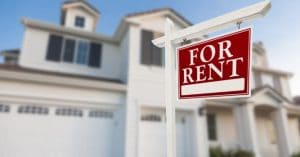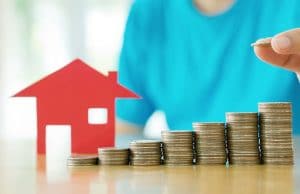What is a rental yield?
In the world of a property investor, there are almost countless measures, terms and phrases to get acquainted with that help you determine your future and current position, viability and long-term outlook.
For landlords, one of the best indicators of your financial stakes is the rental yield. It’s a quick and easy snapshot of how your prospective rental income stacks up against your outlay.
The yield is a fairly basic calculation but one that allows you to quickly know where you stand.
How do you calculate it?
 A rental yield is basically a snapshot of the income you make from a property versus the overall costs of the investment.
A rental yield is basically a snapshot of the income you make from a property versus the overall costs of the investment.
It gives you an idea of the ongoing return you’re likely to enjoy. Before purchasing a property, it helps you understand if it’s the right property to put your money into.
And after you’ve bought it, it can help guide any potential rental price increases.
There’s a gross rental yield and a net rental yield.
A gross yield tells you the equation of rent versus the value of the property.
Here’s how you calculate a gross yield.
- What’s the rent you’ll charge a tenant in a year?
- What’s the value of the property?
- Divide the annual rent by the property’s value and multiply it by 100 to get a percentage figure.

So, if you’re collecting $30,000 a year from your tenant and the property itself is worth $500,000, then your gross rental yield is six per cent.
A net rental yield takes into account all of your expenses of holding the investment and compares it to your income.
Think of the two like the measures a business uses to look at their position – they examine their total income to see how the business is doing and how it compares to the value of it, but they also look at the profit after all of those costs.
Here’s how to calculate a net yield.
- What are all of the costs associated with owning the property? Think management fees, maintenance, property management and rates.
- What’s the rent you’ll charge a tenant in a year?
- Take the total costs from your total income in the year and divide that figure by the value of your property. Multiply it by 100 to get a percentage figure.
In virtually all cases, a net yield doesn’t take into account the interest you’re paying on any mortgage. That relates to your financial position and not the ‘business’ of the property. It’s also a tax deduction for you.
So, in the same example as above, let’s say you’re bringing in $30,000 in rent each year and your total costs relating to the property are $20,000 a year meaning your net income is $10,000. That gives you a net rental yield of 2 per cent after all costs and interest etc…
What’s a good yield?
There’s no perfect answer to that question. It depends on a whole range of individual factors.
What’s ‘good’ depends on your investment strategy. Are you after a property that gives you cash flow now? Are you more interested in a low after cost return for the sake of future capital growth? Do you have a high personal income that you’re looking to reduce the tax liability of with property investment deductions? Are you investing for yield or income return OR are you looking for capital growth? All these factors will have an impact on your overall yield.
Not to mention property classes. What? My property goes to school? Well no it doesn’t. What I mean by property classes is the difference between residential, commercial, industrial, office space or vacant land. All these will attract a different type of rental and therefore affect the yield. Typically Commercial and Industrial rents will attract a higher yield than a residential property.
It also depends on the area you’re buying in and its fundamentals. A premium, blue-chip suburb that’s in high demand with buyers is unlikely to deliver a really healthy rental yield. But a suburban or regional area could.
And different states and/or capital cities will also generate different yields as well.
A yield isn’t a black and white measure. It’s meant to indicate the position of your specific situation.
But, generally speaking, a gross rental yield of four or five per cent in a metropolitan location is pretty good. In a suburban or regional area, somewhere above five per cent is good.
A rental yield is a simple tool to use in the decision-making process, as well as over the following years. But it shouldn’t be the only thing you consider.
The information provided in this article is general in nature and does not constitute personal financial advice. The information has been prepared without taking into account your personal objectives, financial situation or needs. Before acting on any information you should consider the appropriateness of the information with regard to your objectives, financial situation and needs.
- Why every First Homebuyer needs a Mortgage Broker - October 7, 2024
- As Migration Returns, What Does it Mean for Housing Markets? - April 26, 2024
- How to prepare to buy your first home in 2023 - December 2, 2022

